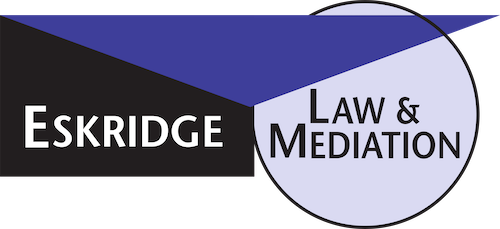June 2, 2020
California is an “at-will” employment state. An at-will employee may be demoted or terminated for no reason, or even an arbitrary or irrational reason. [Silo v. CHW Med Found. (2002) 27 Cal.4th 1097, 1104.] According to the California Supreme Court in Tameny v. Atlantic Richfield Co., an employer’s traditional authority to terminate an employee at-will may be limited by statute or by considerations of public policy. [Tameny v. Atlantic Richfield Co. (1980) 27 Cal.3d 167, 172.] Therefore, this cause of action has also been widely referred to as a “Tameny claim.”
To establish a claim for adverse employment action in violation of public policy, each of the following must be proven:
● An employer-employee relationship existed;
● The employer terminated the employee (or took other adverse employment action);
● The termination or adverse employment action was a violation of public policy;
● The termination or adverse employment action was a legal cause of the employee’s injury; and
● The employee suffered damages as a result.
The Employer-Employee Relationship
A Tameny cause of action lies where there is an employer-employee relationship, as opposed to where an independent contractor is involved. Conversely, the claim can only be asserted against the employer, and not against a supervisory employee. (Note that this claim cannot be brought against a public entity. [Gov. Code § 815(a); Miklosy v. Regents of Univ. of Calif. (2008) 44 Cal.4th 876.])
There was an Adverse Employment Action Taken Against the Employee
An adverse employment action must occur in order to bring a Tameny claim. An adverse employment action is one which “materially affect[s] the terms and conditions of employment.” This includes termination and demotion. [Yanowitz v. L’Oreal USA, Inc. (2005) 36 Cal.4th 1051, 1123, 1126]
A claim cannot lie for mere refusal to renew an employment contract after its expiration, unless the employee engaged in a protected legal activity (such as complaining about safety violations) and the employer’s refusal to renew was motivated by the employee’s activities. A Tameny claim may also lie if there was a demotion, or a suspension without pay. [Garcia v. Rockwell Int’l Corp. (1986) 187 Cal.App.3d 1556, 1562.]
The Adverse Employment Action was a Violation of Public Policy
The adverse employment action must be in violation of “public policy,” which must 1) be based on either a constitutional or statutory provision (or ethical rule or regulation), 2) inure to the benefit of the public rather than merely serving the interests of the individual, 3) be well established at the time of the adverse employment action, and 4) be substantial and fundamental. [Stevenson v. Superior Court (1997) 16 Cal.4th 880, 894.]
Violations of the following public policies have been found sufficient to support Tameny claims:
● Employment discrimination;
● Unsafe workplace;
● Refusing to sign covenants not to compete;
● Terminating an employee for breaching a noncompete agreement with a former employer;
● Refusing to release the employer from liability for intentional acts;
● Prompt payment of earned wages;
● Whistleblowing regarding the misappropriation of public funds;
● Disclosing improper practices affecting the public at large;
● Testifying at a hearing;
● Advocating appropriate medical care for a patient;
● Discussing wages with co-workers;
● Equal pay;
● Political activity;
● Right to overtime pay;
● Right to a workplace free of violence or credible threats of violence;
● Right to apply for unemployment benefits;
● Right to take family leave; or
● Terminations for refusing to engage in unlawful conduct.
A Causal Link Must Exist Between the Adverse Employment Action and the Employee’s Legally Protected Activity
There must be a causal link between the employee’s protected activity and the adverse employment action. A causal link may be established by the employer’s knowledge that the employee engaged in protected activities, and the proximity in time between the protected action and the allegedly retaliatory employment decision. [Morgan v. Regents of Univ. of Calif. (2000) 88 Cal.App.4th 52, 69.]
When adverse employment actions are taken within a reasonable period of time after complaints have been made, retaliatory intent may be inferred. [Passantino v. Johnson & Johnson Consumer Products, Inc. (9th Cir. 2000) 212 F.3d 493, 506.] This proximity in time will establish “legal causation” between the adverse employment action and the protected activity.
The Employee Suffered Damages
If you feel you have been subjected to an adverse employment action for engaging in protected activity, or are being set up for termination, you may be entitled to recover a full measure of tort damages, including damages for emotional distress and punitive damages. [Light v. California Dept of Parks & Recreation (2017) 14 Cal.App.5th 75.]
Need more information?
ESKRIDGE LAW may be contacted by phone (310/303-3951), by fax (310/303-3952) or by email (geskridge@eskridgelaw.net). Please visit our website at eskridge.hv-dev.com.
This article is based on the law as of the date posted at the top of the article. This article does not constitute the provision of legal advice, and does not by itself create an attorney-client relationship with Eskridge Law.
